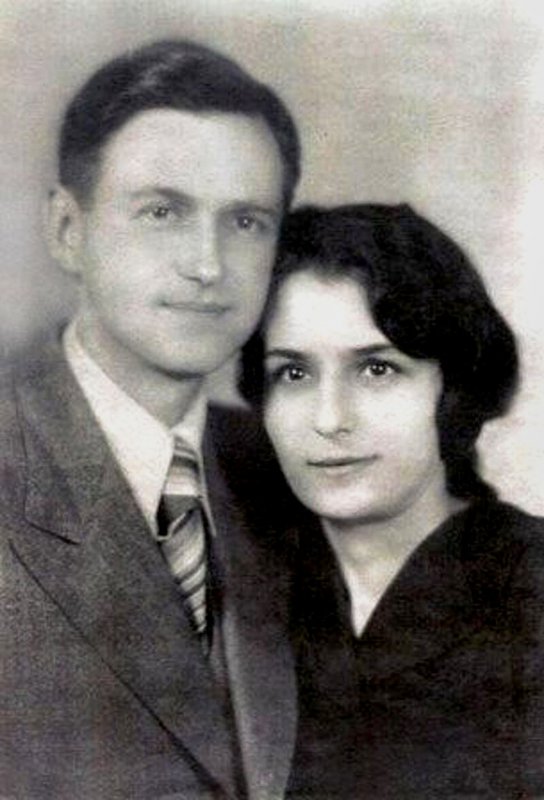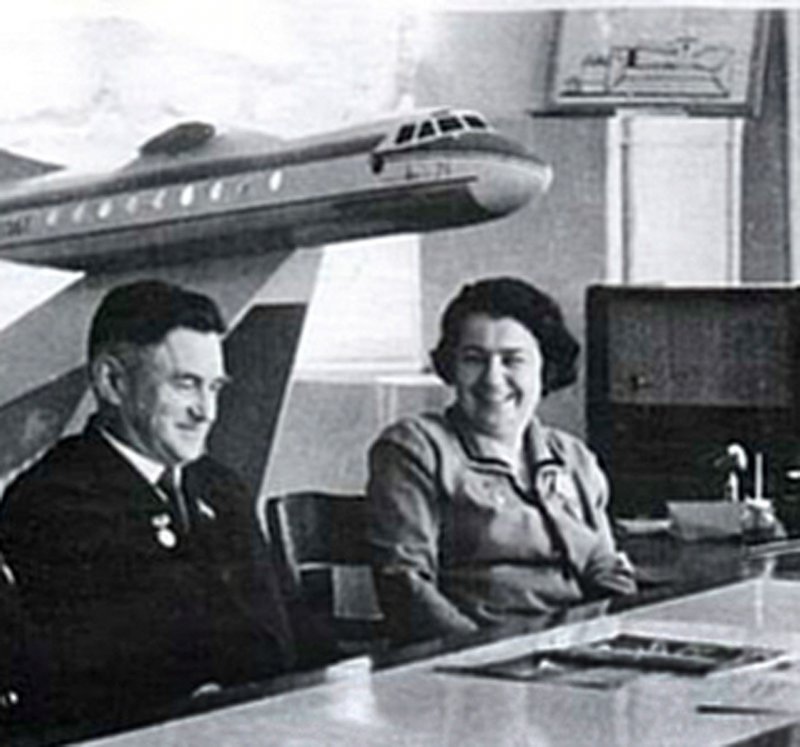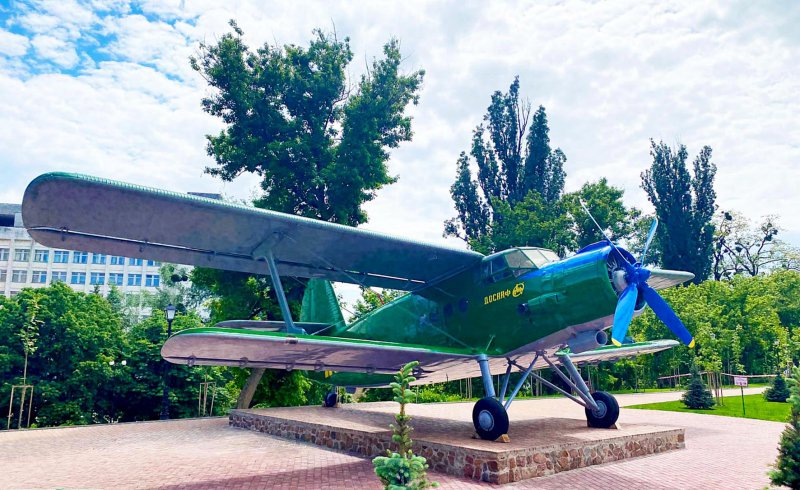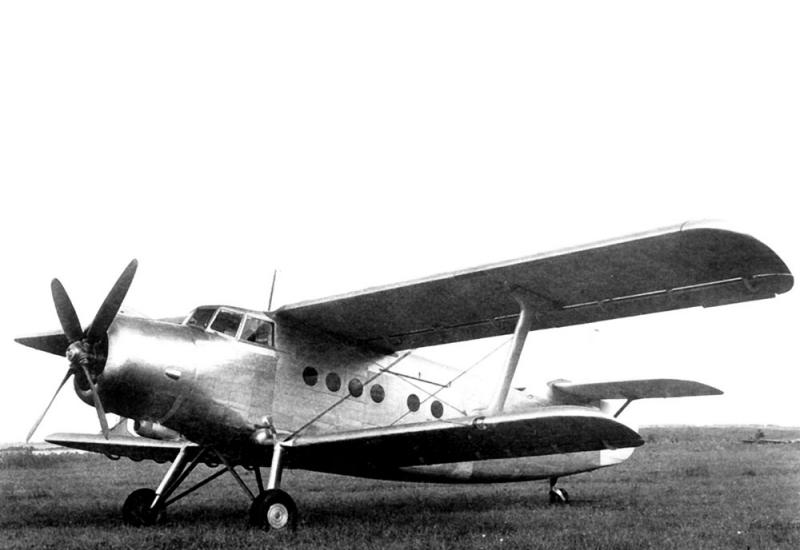On occasion of the 75th anniversary of the first flight of the An-2 aircraft
"The An-2 is my greatest success... It has no analogues in the world of aviation technology. This aircraft is built taking into account our unique conditions, which do not exist anywhere else..." - Aircraft Designer General Oleg Kostiantynovych Antonov said. These words of his can be read on the plaque next to the An-2, which stands in the Aviation Pioneers Park on the territory of Igor Sikorsky Kyiv Polytechnic Institute.
Such an assessment of the "kukuruznik" (corn crop duster) by someone who created dozens of types of aircraft, including the famous giant aircraft An-22 Antei and An-124 Ruslan, may seem strange. But it is not unfounded.
The An-2 is the only aircraft in history, the mass production of which has lasted for more than seven decades, which has a corresponding entry in the Guinness Book of World Records. But that's not all...
To date, more than 18 thousand (!) An-2s of almost 40 various modifications have been built in the world. One of them is for transporting passengers to hard-to-reach places where there are neither roads nor airfields. During the first 15 years of operation, these 12-seater planes carried more than 100 million passengers. They continue doing that to this day... After all, how many people made their first parachute jumps from it! The An-2 flew to all continents including Antarctica. And in 2015, the 41-year-old An-2 crossed the Atlantic Ocean from Europe to America...
August 31, 2022 marks the 75th anniversary of the first flight of the An-2 aircraft.
The work on the An-2 joined together the creative and personal destinies of two outstanding people - Oleg Antonov and Elizaveta Shakhatuni. A lot has been written about the first, and very little about the latter, although she is the only woman in the history of aviation who was the deputy chief designer. Moreover, she dealt with almost the most responsible issues of aircraft construction, namely the strength calculations for aircraft.
Elizaveta Shakhatuni was born in an Armenian family of teachers in Yerevan on December 22, 1911. As a child, she became interested in issues of strength. She recalled: I considered myself a "strength specialist" from an early age, around the age of ten, when it was explained to me that the beams on which the roof of our house was supported were chosen by a special calculation. They are strong and we can live in security in this house. It impressed me, interested me, and later, in my student years, my favorite subjects were the strength of materials, structural mechanics and the strength calculations for aircraft."
After graduating from high school in 1928, Elizaveta entered the engineering faculty of Yerevan State University. After studying for two years, she went to Moscow and entered the second year of the Moscow Aviation Institute. While studying at the MAI, Elizaveta became interested in gliders. Here she had, so to speak, met Oleg Antonov before she met him in person, as the students flew on gliders of his design...

In 1935, Elizaveta Shakhatuni graduated from the institute with honors, received the qualification of a mechanical engineer and was assigned to the design bureau of S.V. Ilyushin to the Department of Aviation Equipment and Weapons. But she wanted to deal with the strength of aircraft, so, two years later she moved to the glider factory in Tushino near Moscow, whose chief designer was Oleg Antonov. Here Elizaveta was the first and only certified specialist in the strength of aircraft structures.
She was struck by Oleg Antonov's obsession with the glider business, which turned into a feeling of admiration for his talent, sophistication and intelligence. In the end, she fell in love with her chief.
In 1939, the glider factory was repurposed, the production of gliders was stopped. Oleg Antonov moved to the position of the leading engineer of the O.S. Yakovlev design bureau, and Elizaveta Shakhatuni got to the S.O. Lavochkin design bureau, where she participated in the creation of the LaGG-3 fighter aircraft.
On September 1, 1939, Hitler's Germany attacked Poland, and the Second World War began. And shortly before this date, the Soviet Union concluded a non-aggression pact with Germany, as well as trade agreements, according to which it received industrial equipment and samples of the most advanced military equipment, including military aircraft in exchange for raw materials. The light monoplane Fi 156 Storch, which had unique flight characteristics: a short take-off and run length, good stability and controllability in flight, was among the latter. Oleg Antonov was charged with studying the aircraft and creating its analogue. From March 1940, he worked at an aircraft factory in Leningrad, and in 8 months a new plane ("OKA-38") made of domestic materials and with a domestic engine was ready. Its serial production was planned to start in Kaunas, Lithuania, where Antonov arrived in March 1941. He called Elizaveta Shakhatuni there for carrying out strength calculations.
The implementation of the plan was prevented by the war. On June 22, 1941, German tanks approached Kaunas. The workers of the plant, who could, ran away under fire. Oleg Antonov and Elizaveta managed to leave in a fire engine, which was driven from somewhere by a young employee of the design bureau. Two days later they were in Moscow. This event brought them together for life and they got married the same year...
At the end of June 1941, Antonov was appointed chief engineer of the glider department of the People's Commissariat of Aviation Industry, which was supposed to organize the mass production of troop-carrying air vehicle capable of transporting people and cargo to hard-to-reach areas of the front lines and behind enemy lines. In July, he became the chief designer of the glider factory, where he designed the A-7 – a seven-seater military glider. Their production began in Moscow, and in October 1941 the enterprise was evacuated to Tyumen. Despite all the difficulties, about 400 A-7 gliders were produced. Elizaveta Shakhatuni worked in Novosibirsk as a senior strength specialist in the branch of Yakovlev Design Bureau and was engaged in calculations of the Yak-3 fighter aircraft.
In February 1943, O.K. Antonov was appointed first deputy to O.S. Yakovlev. For some time, he worked on Yak-3 and Yak-9 combat aircraft, but his thoughts were already directed towards a peaceful life. Although the war suddenly interrupted his work on the OKA-38 aircraft, the dream of creating a short take-off and landing aircraft did not leave him. Antonov pondered over the design of a universal aircraft, easy-going about the quality of airfields in time free from his main job. First of all, he chose the biplane scheme, which at the time was considered archaic, but together with a powerful engine could provide adequate performance. In August 1944, he developed a paper vehicle and sent it to aviation specialists for examination. He repeatedly received negative conclusions from experts, until at the beginning of 1946, Designer General O.S. Yakovlev put his resolution: "This is an interesting plane, it must be built."
To implement the project, O.S. Yakovlev decided to create a separate Research and Design Bureau headed by O.K. Antonov. The newly created OKB-153 began working in Novosibirsk on May 31, 1946. It was not possible to recruit the necessary number of experienced designers, and Oleg Kostyantynovich took a risk and hired the entire course of young graduates of the Novosibirsk Aviation Technical School.
Elizaveta Shakhatuni headed a team of six specialists that carried out strength calculations of the structural elements of the future An-2. The contribution of this team to the durability of the aircraft is difficult to overestimate. The structure withstands incredible loads during take-offs and landings, and flights at extremely low altitudes in various climatic conditions, and the structural envelope is such that some aircraft are operated for more than 40 years and have a resource that is difficult to calculate! Elizaveta Avetivna recalled: "Antonov... knew how to infect people with his ideas and cause a creative jump. He never found fault with his team members, never asked when they arrived, where they left for. And people worked very diligently."
It took one year and three months to design and manufacture the first prototype, and on August 31, 1947, the SKh-1 made its first test flight. In October, it was driven from Novosibirsk to the Zakharkovo airfield near Moscow, and in April 1948, its official tests began at the State Scientific Research Institute of Civil Aviation. After studying the flight and technical characteristics, it was time to test the aircraft's agricultural equipment. For this purpose, collective farm fields of Ukraine were chosen, and on June 12, 1948, the SKh-1 flew to a field site near Kagarlyk, Kyiv oblast. Tests showed that the productivity of field treatment with chemicals compared to the predecessor Po-2 increased 10 times! The aircraft was demonstrated to the leaders of Ukraine, and in August 1948, mass production of the An-2 (this was the official name given to the SKh-1) began at the Kyiv Aircraft Plant rebuilt after the war. The first serial plane hit the sky on September 6, 1949.
Meanwhile, works on further development of the An-2 began at the Antonov Research and Design Bureau in Novosibirsk. By 1950, several modifications had been made to perform tasks ranging from atmosphere sounding to wildfire suppression. Different variants of the landing gear made it possible to take off from wet soil, snow, and water. The plane demonstrated its versatility and easy maintenance. However, there were problems with increasing serial production. The Novosibirsk Aircraft Production Plant was busy with the manufacturing of combat planes, and in Kyiv, due to industrial problems, the production targets were not met. Therefore, a decision was made to move the Antonov Research and Design Bureau to Kyiv. After the construction of the manufacturing complex and residential buildings for specialists was completed in August 1952, the Research and Design Bureau headed by O.K. Antonov moved to Ukraine.
During the first four years of serial production, from 1949 to 1952, only 185 aircraft were produced, after the Antonov Research and Design Bureau moved to Kyiv, within 10 years, from 1953 to 1963, 3164 aircraft were manufactured. That was more than three hundred annually, or almost one plane a day! From the beginning of the 1960s, the Kyiv Aircraft Plant began to master the serial production of the An-24 passenger aircraft, and manufacturing it together with the An-2 overgrown the plant. In 1966, the An-2M modification was mass-produced at the Dolgoproodnyy Machinery Factory to the north of Moscow, and 506 of them were manufactured by 1971. However, the base quantity of the An-2 was produced in Poland. As part of the cooperation between the socialist countries at that time, from 1959 the An-2 production was gradually transferred to the Polish Aviation Works in the city of Mielec. The first "Polish" An-2 flew on October 23, 1960, and from January 1961, the Poles completely mastered the production of the aircraft, as well as engines and propellers for them. The demand for An-2 turned out to be crazy! Up to 400 aircraft were produced annually; from 1965 they produced 500 planes per year, and from 1973 - 600 aircraft per year! On September 24, 1984, the 10,000th An-2 rolled off the production line of the WSK "PZL-Mielec"! After 1989, demand started declining, and serial production ceased in 1992, although individual examples were produced almost until 2002. A total of 11,915 An-2 aircraft were produced in Poland during 43 years.
Simple to manufacture and easy to operate, the aircraft was necessary for the young People's Republic of China, whose aviation industry was just nascent. In October 1956, the production documentation for the An-2 went to the China Nanchang Aircraft Manufacturing Corporation. The hard-working Chinese launched the production very quickly, and the first manufactured An-2 with the new designation "Feng Shou-2" took off on December 7, 1957. Serial production began in March 1958, and before the end of the year 229 aircraft were produced. 727 aircraft were manufactured within 10 years. In 1970, the production of "Feng Shou-2" was transferred to the Shijiazhuang Aircraft Industry Limited Company, where 221 aircraft with the new designation Y-5 ("Yunshuji-5") were manufactured, and in December 1996, the 1,000th "Chinese” An-2 was produced. Its serial production continues in China to this day, 10-20 aircraft annually.

The Antonov Research and Design Bureau developed a lot of more "serious" transport and passenger aircraft after the An-2. But the whole point of many of them remained the same: an aircraft with short take-off and landing and easy-going airfield quality. The firstborn An-2 dwelled within their hearts... Oleg Antonov and Elizaveta Shakhatuni continued living and working together.
Strength calculations for all (!) aircraft bearing the designation "An'' on the fuselage were carried out under the leadership of E.A. Shakhatuni. She also made a significant contribution to the development of the theory of strength, aeroelasticity and aircraft life.
During the development of giant aircraft An-22 Antei, An-124 Ruslan, An-225 Mriya it was necessary to make such strength calculations, which no one in the world had performed before. For this purpose, on the initiative of E.A. Shakhatuni, the Scientific and Technical Complex "Strength" was organized at the Antonov Research and Design Bureau, which included powerful calculation and research units and experimental laboratories. Among all aviation design bureaus of the former Soviet Union, only the Antonov Research and Design Bureau had such a complex. It included about 150 specialists, and about 800 people took part in E.A. Shakhatuni’s "school of strength" since 1946.
Elizaveta Avetivna worked as a Deputy Chief Designer for 10 years, until her retirement in 1989. But even after that, she did not leave the company and performed the duties of the main strength specialist of the Aeronautical Scientific-Technical Complex named after Antonov until 2007. "Steel strength" of her character was always combined with considerable modesty in life.
E. A. Shakhatuni passed away on October 27, 2011, a few months before her 100th birthday...
Each Antonov aircraft carries a part of Elizaveta Avetivna's soul, but the An-2 is a special one, the very first and the strongest!

The plane, which was installed in the Aviation Pioneers Park on the territory of Igor Sikorsky Kyiv Polytechnic Institute in May 2021, is the An-2T (transport) modification. It was built in the Polish city of Mielec in January 1975.
This plane appeared thanks to philanthropist Anatoliy Shumsky, chairman of the board of the NGO "Ukrainian Automobile Club", a long-time partner of the State Polytechnic Museum, who bought it at an auction. Specialists of the Antonov ASTC carried out the restoration, and the plane was presented to the university community and all visitors as a monument to the design genius and talent of the specialists who created it.

